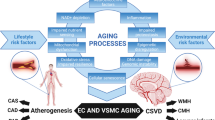Abstract
Purpose
The proportion of acute symptomatic lacunar infarction lesions that undergo cavitation and the factors influencing cavity formation are yet unclear, particularly in the Chinese population. Hence, we investigated changes in the diameter of acute lacunar infarction lesions and identified the risk factors for the progression of these lesions.
Methods
A total of 160 patients (mean age 66 years) with acute symptomatic lacunar infarction lesions underwent two magnetic resonance imaging (MRI) examinations: diffusion-weighted imaging (DWI) at onset (lesion diameter < 20 mm) and T2-weighted imaging/fluid-attenuated inversion recovery sequences at follow-up (median follow-up time 389 days). Lacunar infarction lesion progression was categorized as complete cavitation (lacune), partial cavitation, white matter lesion (WML), or disappearance of the lesion. The risk factors for cavity formation were evaluated.
Results
Upon follow-up MRI, lesions had changed to lacunes in 20 (12.5%) patients, partial cavitation in 23 (14.4%), WMLs in 97 (60.6%), and had disappeared in 20 (12.5%). Lacune formation was related to hypertension (P = 0.026); cavity (lacune and partial cavitation) formation was related to diabetes (P = 0.009) and diameter change (P = 0.015).
Conclusions
Approximately a quarter of the acute symptomatic lacunar infarction lesions observed with follow-up MRI were cavitated. Hypertension was negatively associated with lacune formation; diabetes and diameter change were negatively associated with cavity formation.


Similar content being viewed by others
References
Tsai CF, Thomas B, Sudlow CL (2013) Epidemiology of stroke and its subtypes in Chinese vs white populations: a systematic review. Neurology 81(3):264–272
Pantoni L (2010) Cerebral small vessel disease: from pathogenesis and clinical characteristics to therapeutic challenges. Lancet Neurol 9(7):689–701
Valdés Hernández MDC et al (2015) Rationale, design and methodology of the image analysis protocol for studies of patients with cerebral small vessel disease and mild stroke. Brain Behav 5:e00415. https://doi.org/10.1002/brb3.415
Prins ND, Scheltens P (2015) White matter hyperintensities, cognitive impairment and dementia: an update. Nat Rev Neurol 11(3):157–165
Jokinen H, Gouw AA, Madureira S, Ylikoski R, van Straaten E, van der Flier W, Barkhof F, Scheltens P, Fazekas F, Schmidt R, Verdelho A, Ferro JM, Pantoni L, Inzitari D, Erkinjuntti T, LADIS Study Group (2011) Incident lacunes influence cognitive decline: the LADIS study. Neurology 76(22):1872–1878
Wardlaw JM, Smith EE, Biessels GJ, Cordonnier C, Fazekas F, Frayne R, Lindley RI, O'Brien JT, Barkhof F, Benavente OR, Black SE, Brayne C, Breteler M, Chabriat H, Decarli C, de Leeuw FE, Doubal F, Duering M, Fox NC, Greenberg S, Hachinski V, Kilimann I, Mok V, Oostenbrugge Rv, Pantoni L, Speck O, Stephan BC, Teipel S, Viswanathan A, Werring D, Chen C, Smith C, van Buchem M, Norrving B, Gorelick PB, Dichgans M, STandards for ReportIng Vascular changes on nEuroimaging (STRIVE v1) (2013) Neuroimaging standards for research into small vessel disease and its contribution to ageing and neurodegeneration. Lancet Neurol 12(8):822–838
Arboix A, Marti-Vilalta JL (2009) Lacunar stroke. Expert Rev Neurother 9(2):179–196
Potter GM, Doubal FN, Jackson CA, Chappell FM, Sudlow CL, Dennis MS, Wardlaw JM (2010) Counting cavitating lacunes underestimates the burden of lacunar infarction. Stroke 41(2):267–272
Lee KJ, Jung H, Oh YS, Lim EY, Cho AH (2017) The fate of acute lacunar lesions in terms of shape and size. J Stroke Cerebrovasc Dis 26(6):1254–1257
Lodder J (2007) Size criterion for lacunar infarction. Cerebrovasc Dis 24(1):156 author reply 156-7
Fazekas F, Chawluk JB, Alavi A, Hurtig HI, Zimmerman RA (1987) MR signal abnormalities at 1.5 T in Alzheimer’s dementia and normal aging. AJR Am J Roentgenol 149(2):351–356
Koch S, McClendon MS, Bhatia R (2011) Imaging evolution of acute lacunar infarction: leukoariosis or lacune? Neurology 77(11):1091–1095
Moreau F, Patel S, Lauzon ML, McCreary C, Goyal M, Frayne R, Demchuk AM, Coutts SB, Smith EE (2012) Cavitation after acute symptomatic lacunar stroke depends on time, location, and MRI sequence. Stroke 43(7):1837–1842
Loos CM, Staals J, Wardlaw JM, van Oostenbrugge R (2012) Cavitation of deep lacunar infarcts in patients with first-ever lacunar stroke: a 2-year follow-up study with MR. Stroke 43(8):2245–2247
Arboix A et al (2007) Recurrent lacunar infarction following a previous lacunar stroke: a clinical study of 122 patients. J Neurol Neurosurg Psychiatry 78(12):1392–1394
del Zoppo GJ (2009) Relationship of neurovascular elements to neuron injury during ischemia. Cerebrovasc Dis 27(Suppl 1):65–76
Mena H, Cadavid D, Rushing EJ (2004) Human cerebral infarct: a proposed histopathologic classification based on 137 cases. Acta Neuropathol 108(6):524–530
Choi HY, Yang JH, Cho HJ, Kim YD, Nam HS, Heo JH (2010) Systemic atherosclerosis in patients with perforating artery territorial infarction. Eur J Neurol 17(6):788–793
Loos CMJ, Makin SDJ, Staals J, Dennis MS, van Oostenbrugge R, Wardlaw JM (2018) Long-term morphological changes of symptomatic lacunar infarcts and surrounding white matter on structural magnetic resonance imaging. Stroke 49(5):1183–1188
O'Brien JT (2006) Vascular cognitive impairment. Am J Geriatr Psychiatry 14(9):724–733
van Dijk EJ et al (2008) Progression of cerebral small vessel disease in relation to risk factors and cognitive consequences: Rotterdam Scan study. Stroke 39(10):2712–2719
van Leijsen EMC et al (2017) Nonlinear temporal dynamics of cerebral small vessel disease: The RUN DMC study. Neurology 89(15):1569–1577
Funding
This research did not receive any grant from funding agencies in the public, commercial, or non-for-profit sectors.
Author information
Authors and Affiliations
Corresponding author
Ethics declarations
Conflict of interest
The authors declare that they have no competing interests.
Ethical approval
The study was approved by the local ethics council.
Informed consent
All participants in the study received informed consent.
Additional information
Publisher’s note
Springer Nature remains neutral with regard to jurisdictional claims in published maps and institutional affiliations.
Rights and permissions
About this article
Cite this article
Du, M., Bai, H., Chen, J. et al. Magnetic resonance imaging and risk factors for progression of lacunar infarct lesions in Chinese patients. Neuroradiology 62, 161–166 (2020). https://doi.org/10.1007/s00234-019-02303-z
Received:
Accepted:
Published:
Issue Date:
DOI: https://doi.org/10.1007/s00234-019-02303-z




